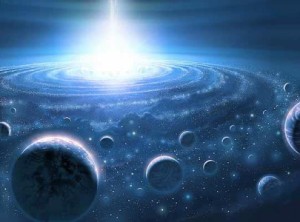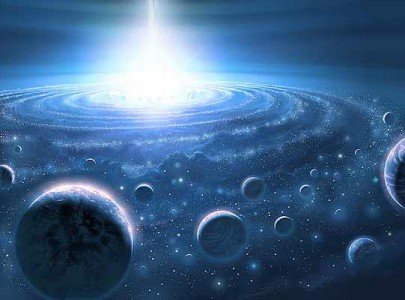[quads id=5]
Translated from my original publication in Spanish
Every time we look at the sky we always see the stars that appear throughout the night, some are planets, others a cluster of stars and others are like our sun, but we always ask ourselves how many stars there are in the universe, but why not? how many planets there will be, and we also wonder, how many have living beings.

There is an equation to calculate the number of existing civilizations, but I will not focus on those aspects, since I am not a mathematician, and in that equation there are many unknown parameters and they are only suppositions, that equation is the Drake equation.
Now we will calculate curious facts by means of basic mathematics, without a scientific method, since it is absurd to do it when we do not have the real parameters, so I will only do some leisure with the data that we know through the observation that has been made of the universe for years.
It is estimated that there are one hundred billion (100,000,000,000) galaxies in the observable universe, from these galaxies there are several classifications in terms of the number of stars that exist in them, ranging from dwarfs, with 107 (10,000,000 ten million), to the giants, with 1012 (1,000,000,000,000 one trillion) but since we do not have an exact figure of how many dwarfs or giants we will take the average number that would be 109, which would be 1,000,000,000, a billon stars per galaxy.
We already have that there are 100,000,000,000 one hundred thousand million galaxies on the Universe of which each galaxy has (1,000,000,000) at least billion stars, so with a multiplication we would have to: 1011 x 109 = 1020 one hundred trillion stars in the universe (100,000,000,000,000,000,000).
Now we will remove the average planets per star, for this I will not get into much trouble; if we suppose that our solar system has 8 planets and 5 dwarf planets (those known until today 24-March-2012, Ceres, Pluto, Haumea, Makemake and Eris) we will take into account that most extrasolar systems that have been detected do not surpass the number of planets in our planetary system, perhaps due to lack of observation, that does not mean that they have less number, but so far is what we know, we will take as a reference half of our planetary system to get the number of planets, by which would have on average 5 planets plus 3 dwarf planets by planetary system, then we would have by a few simple multiplications to remove the planets of the universe:
1020 x 5 = 5020 five hundred trillion planets (500,000,000,000,000,000,000) and
1020 x 3 = 3020 three hundred trillion dwarf planets (300,000,000,000,000,000,000)
So in the universe with the data we know, there are approximately 3020 + 5020 = 8020 eight hundred trillion planets (800,000,000,000,000,000,000).
800 trillion planets of which if we assume that of every 15 one has life (fifteen planets of our solar system and only one has life) then:
8020/15 = 5319 fifty-three trillion habitable planets (53,000,000,000,000,000,000)
Although I do not think that of every 15 there is one alive but the number must be much smaller, but as we see that amount even though the number is huge, maybe there may be life in several satellites but those do not take them into account since the number would grow radically.
In summary:
- In the universe there are 100,000,000,000 one hundred billion galaxies
- Of which each galaxy has 1,000,000,000 billion stars
- This gives us 100,000,000,000,000,000,000 one hundred trillion stars in the universe
- Of which each star has an average of 8 planets (5 planets and 3 dwarfs)
- This gives us a total of 800,000,000,000,000,000,000 eight hundred trillion planets in the universe.
- Of which at best 53,000,000,000,000,000,000 fifty-three trillion planets alive in the universe
This last data is exaggerated but the point of this article is not to be exact, we should also take other factors such as how long a civilization or a planet lives and things like that, but the purpose of this article is to take as a curious fact, that In spite of our planet that seems enormous, the universe is too big, that only when one starts to see things carefully, we begin to see that we are only a grain of sand in this ocean, called the Universe.
As a detail since we are with this number and multiplication, the number of planets that exists approximately in the universe if for each planet we use the measure of a grain of sand (1 millimeter) and put each grain one on another forming a building, our structure would measure close to the width of the Milky Way.
Writted by Hector de Leon Guevara (2012)



